Extensive regulations strain many companies, but for small manufacturers, compliance is a constant, looming threat, especially as regulatory requirements expand. How can manufacturers maintain regulatory compliance while meeting product delivery deadlines and delivering customer satisfaction? Let’s explore how regulatory compliance has impacted output, the high price of noncompliance, the underlying issue, and where to seek specific solutions for regulatory compliance challenges.
According to the National Association of Manufacturers (NAM), small manufacturers (those with fewer than 50 employees) pay $34,671 in compliance costs per employee per year. That’s three times as much as the average U. S. company.
How can this be?
Regulatory compliance costs don’t scale according to an organization’s size, so the expense consumes a more significant portion of revenue. Therefore, the heaviest burden falls to smaller companies.
Of the firms NAM surveyed, 88% stated that federal regulations continue to be one of the top challenges. Companies must manage the obvious problems of the additional cost and delayed production that almost always results from increasing regulation. At the same time, increasing regulations cause companies to miss out on important sources of increased revenue, because when regulations drain time and resources, innovation lags and competition from less heavily regulated markets becomes more intense. For many small manufacturers, survival becomes the goal.

Impact of Compliance Regulations on Manufacturing Output
Even for those small- and mid-sized manufacturers who are currently keeping their heads above water, further challenges loom on the horizon. If federal regulations continue to expand at recent rates, manufacturing output is expected to drop at least 6% over the next decade–and that’s the pre-pandemic prediction.
According to Deloitte, current production remains below 2019 levels, and total industrial capacity remains below the pre-pandemic level of 77%. This isn’t shocking news for those who have been following the manufacturing industry. Since 1998, manufacturing regulation costs have been increasing by 7.6% every year while manufacturing output only grew .4%. When you add a pandemic into the mix, decline steepens.
The industries with production levels most heavily affected by regulations from 2012-2021 include:
- Petroleum 10.3% drop
- Transportation equipment 9% drop
- Chemicals 8.8% drop
- Aluminum 8% drop
- Iron/steel 7% drop
While global markets and industries can adapt to a “new normal” and recover production levels, regulatory compliance is here to stay and will most certainly continue to expand.
EPA Has Greatest Impact on Manufacturing
While most organizations value common-sense regulations and reforms that protect public health, safety, and economic growth, they also believe federal laws can become too extensive and restricting.
For example, the EPA has 972 total regulations for manufacturing. Additional governmental regulations break down as follows:
- DOT – 808
- Labor Department – 214
- Energy Department – 106
It’s not only the manufacturing industry that is hard hit with regulations. The machinery and transportation equipment industry is the most heavily regulated with 1,608 at last count. But the problem is about more than volume: it’s also about cost. Not only does regulatory compliance restrict manufacturing output, but it also costs more directly. According to NAM’s 2012 report, the regulatory cost per employee per year for small manufacturers are:
- Environmental regulations – $20,361
- Economic regulations – $12,885
- OSHHS – $1,048
- Tax compliance – $378
- Total $34, 671
When smaller companies spend this much money on each new hire, it often limits their hiring capacity and production. Resources for investment, innovation, and global competition are inevitably diverted to fund compliance costs.
Primary Areas of Regulatory Compliance in Manufacturing
Not all regulations apply to all industries or companies, but when it comes to manufacturing, there are five key areas of regulatory compliance to pay special attention to as a stakeholder. For all manufacturers, the first goal of compliance is protecting the company from breaches and failed audits. This is especially true for small manufacturers who don’t have the resources to withstand the associated losses. (More on this later.)
Upper management must remain watchful over these primary compliance areas to ensure corporate and personal integrity.
Data Protection
All companies collect, process, utilize, and store vast amounts of personal data, whether it’s employee, client, or customer information. This private and sensitive data essentially constitutes a person’s identity. In the era of data breaches and identity theft, government oversight is welcomed and expected.
Federal and state governments have enacted various laws to protect data privacy, which means it’s each company’s responsibility to implement strong data security and practices. In the event of unlawful data processing or disclosure of personal information (intentional or unintentional), organizations are liable for costly fines, regulatory investigations, and even lawsuits.
IT Safety and Security
Cybersecurity has become a top priority in firms of all sizes. Oftentimes, data protection and IT security go hand-in-hand, since most data is stored on private company servers or cloud-based systems.
While there is no single federal law in the U.S. regarding cybersecurity, most states have their own regulations and data breach notification requirements. Any organization that neglects this area of compliance becomes vulnerable to lawsuits and legal liabilities that can be devastating. However, the National Institute of Standards and Technology (NIST) has a Cybersecurity Framework that serves as a guide to best practices for IT safety and security.
Anti-Corruption
The U.S. federal government has specific laws relating to this area of regulatory compliance, most notably the Foreign Corrupt Practices Act (FCPA). The U. S. has also committed to several international conventions against corruption.
The most common forms of corruption that can occur at any level within a company are:
- Fraud
- Embezzlement
- Bribery
- Kickbacks
- Extortion
- Money laundering
- Facilitation payments
- Illegal payments to public officials
Like other companies, small manufacturers must establish and maintain programs and protocols to prevent these most common forms of corruption, and must regularly file reports documenting these programs and protocols. Maintaining regulatory compliance and protecting corporate reputation become primary goals.
Product Safety
One of the top threats to manufacturing is product liability. It’s an umbrella term that means someone was harmed by a manufacturer (i.e. through their products). If a person can legally prove that a product had a dangerous defect or deviation and that the manufacturer failed to warn consumers about it, the company can be found liable for the damages.
Liability can include loss of revenue, regulatory fines, legal fees, as well as a damaged reputation that undermines consumer trust. The Consumer Product Safety Commission (CPSC) has developed safety standards and recall guidelines concerning dangerous products. It’s recommended that all manufacturers have a recall plan in place.
Environment, Health, and Safety (EHS)
The EHS holds manufacturers responsible for the safety of workers, the public, and the planet, requiring that processes and operations are high quality, safe, and eco-friendly. While the value of each regulation is highly debated, manufacturers don’t have the power to pick and choose when to comply.
This means that even small manufacturers must create systematic and effective approaches to comply with the many laws in this area. For example, the EHS regulates carbon footprints and emissions, from which no company, no matter how big, is exempt.
Employment Law
Federal law outlines the fair treatment of employees, which is largely the same for every organization. But some of these employment compliance laws are more complex for manufacturing firms.
The four main categories are:
- Anti-discrimination laws (Title VII of the Civil Rights Act of 1964)
- Labor relations regulations (1935 Wagner Act)
- Compensation laws (1938 Fair Labor Standards Act, FSLA)
- Health and safety laws (Occupational Safety and Health Act, OSHA)
OSHA’s health and safety laws are perhaps the most important for manufacturers because they enforce detailed and complex safety standards.
Fair Competition
These “antitrust” laws protect consumers from predatory or unfair business practices like monopolies, pricing fixing, big rigging, and market allocation. These regulations foster competition, price regulation, innovation, and a focus on customer service in the open market.
The Federal Trade Commision enforces fair competition laws necessitating that businesses establish codes of conduct to remain compliant and encourage employees to report incidents that violate the regulations.
The High Cost of Noncompliance
As expensive as regulatory compliance is, breaches are even more costly, especially for small manufacturers.
A temporary or permanent shutdown is the most dreaded consequence of noncompliance. When a manufacturer’s license is suspended, it can halt or slow production for months or longer. Often, small manufacturers can’t survive the losses and never recover from the breach. In these situations, the fate of the entire organization rests on successful compliance audits.
Typically, upper management is responsible for fostering an “environment of compliance” that integrates with day-to-day operations. This increases employee involvement and responsibility for critical compliance tasks. If the system fails, management is held responsible for the breach.
Noncompliance not only destroys corporate reputations but also shatters financial performance and ruins careers.
The Root of the Problem: Data Management
While companies can’t solve the problem of too many costly and restrictive regulations, they can address the issue at the heart of most compliance breaches: data management. Poor data management triggers most failed audits among small manufacturers. Government agencies require thorough and accurate reporting. However, the specific data required for those reports is often scattered across an organization. This makes companies susceptible to inaccurate and/or poorly collated records.
Accessing, maintaining, securing, and processing precise data from these siloed systems is prone to error. Various stakeholders in various departments typically manage each silo of information manually as time allows. As documents are shared and errors are made, duplicate and inconsistent data abound. Collecting and collating these poor-quality records from individual departments pose other challenges too.
If regulating agencies don’t receive adequate information, an audit is around the corner. Regulatory compliance is like the IRS, so companies can be audited at random or selected due to missing or lackluster reports. And as noted, smaller manufacturers have more to lose after failing an audit.

How Tresbu Digital Transforms Regulatory Compliance for Small Manufacturers
To solve the compliance challenge, manufacturing companies need data access and secure visibility across all departments and functions. This lets stakeholders collect, process, and validate data quickly and precisely to generate timely, accurate reports and drive updates and innovations to keep companies compliant and competitive.
Properly implemented digital transformation orchestrates non-siloed data, supporting employees in their responsibilities and helping them to be more accountable for compliance tasks. When organizations have quality, accurate data for reports, the chances of an audit drop significantly. And the company is prepared for requests if they come.
Tresbu Digital understands the data management and regulatory compliance challenges of small manufacturers. We have over a decade of experience building streamlined and comprehensive workflows using the latest digital technologies.
Our business engineers take the lead in process development while offering the right implementation support throughout transitions. With our solutions, companies successfully unsilo data and innovate systems organization wide.
Tresbut Digital Case-Use Studies Relevant to Manufacturing
Automating the Regulatory Process: Tresbu Digital transformed a company’s regulatory approval process by automating manual workflows that had been coordinating all compliance-related activities. This allowed the client to save 8-10 hours per week that had previously been devoted to managing compliance data. The digital solution also decreased regulatory management costs by 16% while improving security and risk management.
Maximizing Product Profitability: Tresbu built a portal-based workflow solution to create an efficient product review process and expedite resourcing. Among other benefits, our solution gave product managers the information they needed to balance the ROI of existing products with the new revenue that flows from emerging products. This type of capability is a powerful tool in the hands of manufacturers.
Business Partner Registration: Vendor and business partner management can become unwieldy and even affect compliance in some industries. Tresbu Digital streamlined and accelerated a biotech company’s onboarding process for new business partners to increase productivity and profitability. With our digital solutions, we met this challenge and created a master data governance application.




